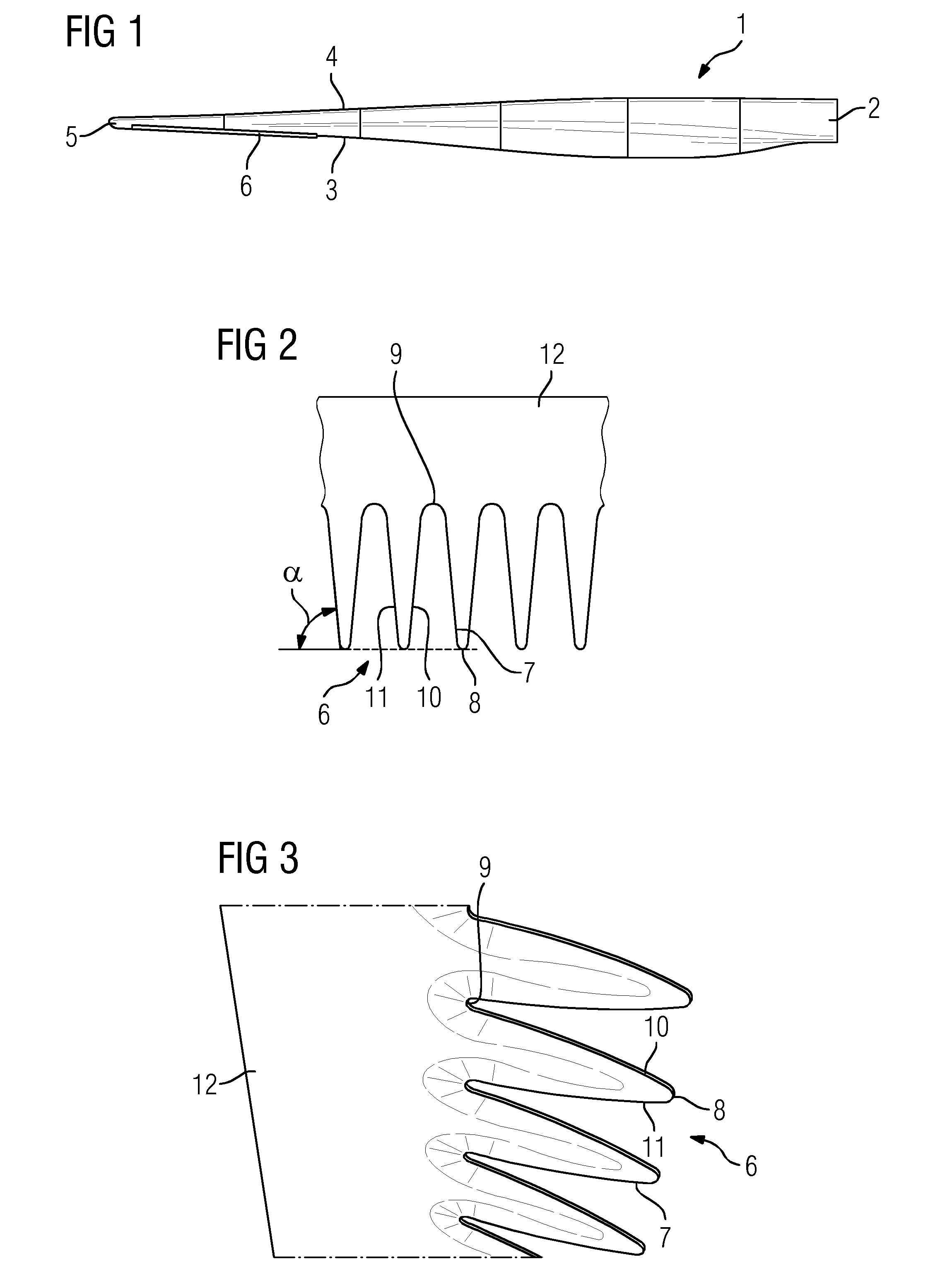Wind turbine blade
- Summary
- Abstract
- Description
- Claims
- Application Information
AI Technical Summary
Benefits of technology
Problems solved by technology
Method used
Image
Examples
Embodiment Construction
[0028]FIG. 1 is a top view of a wind turbine blade 1 with a blade root 2 where it is connected to a hub of a rotor, which is part of an electrical generator. Further the wind turbine blade 1 includes a trailing edge 3, a leading edge 4 and a blade tip 5.
[0029]At the trailing edge 3 a noise reducing device in the form of serrations 6 is attached. The serrations 6 are arranged in a section ranging approximately from 75% to 95% of the span of the wind turbine blade 1.
[0030]FIG. 2 shows a detail of the serrations 6 and FIG. 3 is a perspective view of the trailing edge 3 comprising serrations 6. In FIG. 2 one can see that the serrations 6 have a smooth shape similar to a bird feather. Typically the length of a serration is in the range of 65 mm to 300 mm corresponding to approximately 20% chord. Edges 7 of the serrations run almost parallel to the airflow in order to reduce aerodynamic noise. Consequently the serrations 6 and the trailing edge 3 include an angle between 85% and 90%.
[0031...
PUM
 Login to View More
Login to View More Abstract
Description
Claims
Application Information
 Login to View More
Login to View More - R&D
- Intellectual Property
- Life Sciences
- Materials
- Tech Scout
- Unparalleled Data Quality
- Higher Quality Content
- 60% Fewer Hallucinations
Browse by: Latest US Patents, China's latest patents, Technical Efficacy Thesaurus, Application Domain, Technology Topic, Popular Technical Reports.
© 2025 PatSnap. All rights reserved.Legal|Privacy policy|Modern Slavery Act Transparency Statement|Sitemap|About US| Contact US: help@patsnap.com


